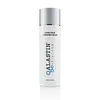What's inside
What's inside
 Key Ingredients
Key Ingredients

 Benefits
Benefits

 Concerns
Concerns

 Ingredients Side-by-side
Ingredients Side-by-side

Water
Skin ConditioningGlycerin
HumectantCaprylic/Capric Triglyceride
MaskingBehenyl Alcohol
EmollientHelianthus Annuus Seed Oil
EmollientPhenoxyethanol
PreservativeAminomethyl Propanol
BufferingSodium Methyl Cocoyl Taurate
CleansingCocamidopropyl Betaine
CleansingAcrylates/C10-30 Alkyl Acrylate Crosspolymer
Emulsion StabilisingRosa Canina Fruit Oil
EmollientDisodium Cocoyl Glutamate
CleansingCaprylyl Glycol
EmollientSucrose Distearate
EmollientSucrose Stearate
EmollientXanthan Gum
EmulsifyingChlorphenesin
AntimicrobialLavandula Angustifolia Oil
MaskingSodium Cocoyl Glutamate
CleansingTocopherol
AntioxidantYucca Schidigera Leaf/Root/Stem Extract
CleansingGlycine Soja Oil
EmollientAloe Barbadensis Leaf Juice
Skin ConditioningWater, Glycerin, Caprylic/Capric Triglyceride, Behenyl Alcohol, Helianthus Annuus Seed Oil, Phenoxyethanol, Aminomethyl Propanol, Sodium Methyl Cocoyl Taurate, Cocamidopropyl Betaine, Acrylates/C10-30 Alkyl Acrylate Crosspolymer, Rosa Canina Fruit Oil, Disodium Cocoyl Glutamate, Caprylyl Glycol, Sucrose Distearate, Sucrose Stearate, Xanthan Gum, Chlorphenesin, Lavandula Angustifolia Oil, Sodium Cocoyl Glutamate, Tocopherol, Yucca Schidigera Leaf/Root/Stem Extract, Glycine Soja Oil, Aloe Barbadensis Leaf Juice
Water
Skin ConditioningCaprylic/Capric Triglyceride
MaskingCetearyl Alcohol
EmollientGlycerin
HumectantCetearyl Methicone
Skin ConditioningDimethicone
EmollientStearyl Glycyrrhetinate
Skin ConditioningTremella Fuciformis Sporocarp Extract
AntioxidantGlycine Soja Sterols
EmollientHydrolyzed Jojoba Esters
Skin ConditioningPanthenol
Skin ConditioningPotassium Olivoyl Hydrolyzed Oat Protein
CleansingBetaine
HumectantLinoleic Acid
CleansingPhospholipids
Skin ConditioningTocopherol
AntioxidantGlyceryl Stearate
EmollientCeteareth-20
CleansingPolyacrylate-13
Polyisobutene
Glyceryl Oleate
EmollientPolysorbate 20
EmulsifyingSorbitan Isostearate
EmulsifyingXanthan Gum
EmulsifyingDisodium EDTA
Phenoxyethanol
PreservativePotassium Sorbate
PreservativeCaprylyl Glycol
EmollientBenzyl Alcohol
PerfumingCaprylhydroxamic Acid
Sodium Benzoate
MaskingEthylhexylglycerin
Skin ConditioningCitric Acid
BufferingWater, Caprylic/Capric Triglyceride, Cetearyl Alcohol, Glycerin, Cetearyl Methicone, Dimethicone, Stearyl Glycyrrhetinate, Tremella Fuciformis Sporocarp Extract, Glycine Soja Sterols, Hydrolyzed Jojoba Esters, Panthenol, Potassium Olivoyl Hydrolyzed Oat Protein, Betaine, Linoleic Acid, Phospholipids, Tocopherol, Glyceryl Stearate, Ceteareth-20, Polyacrylate-13, Polyisobutene, Glyceryl Oleate, Polysorbate 20, Sorbitan Isostearate, Xanthan Gum, Disodium EDTA, Phenoxyethanol, Potassium Sorbate, Caprylyl Glycol, Benzyl Alcohol, Caprylhydroxamic Acid, Sodium Benzoate, Ethylhexylglycerin, Citric Acid
 Reviews
Reviews

Ingredients Explained
These ingredients are found in both products.
Ingredients higher up in an ingredient list are typically present in a larger amount.
This ingredient is an emollient, solvent, and texture enhancer. It is considered a skin-softener by helping the skin prevent moisture loss.
It helps thicken a product's formula and makes it easier to spread by dissolving clumping compounds.
Caprylic Triglyceride is made by combining glycerin with coconut oil, forming a clear liquid.
While there is an assumption Caprylic Triglyceride can clog pores due to it being derived from coconut oil, there is no research supporting this.
Learn more about Caprylic/Capric TriglycerideCaprylyl Glycol is a humectant and emollient, meaning it attracts and preserves moisture.
It is a common ingredient in many products, especially those designed to hydrate skin. The primary benefits are retaining moisture, skin softening, and promoting a healthy skin barrier.
Though Caprylyl Glycol is an alcohol derived from fatty acids, it is not the kind that can dry out skin.
This ingredient is also used as a preservative to extend the life of products. It has slight antimicrobial properties.
Learn more about Caprylyl GlycolGlycerin is already naturally found in your skin. It helps moisturize and protect your skin.
A study from 2016 found glycerin to be more effective as a humectant than AHAs and hyaluronic acid.
As a humectant, it helps the skin stay hydrated by pulling moisture to your skin. The low molecular weight of glycerin allows it to pull moisture into the deeper layers of your skin.
Hydrated skin improves your skin barrier; Your skin barrier helps protect against irritants and bacteria.
Glycerin has also been found to have antimicrobial and antiviral properties. Due to these properties, glycerin is often used in wound and burn treatments.
In cosmetics, glycerin is usually derived from plants such as soybean or palm. However, it can also be sourced from animals, such as tallow or animal fat.
This ingredient is organic, colorless, odorless, and non-toxic.
Glycerin is the name for this ingredient in American English. British English uses Glycerol/Glycerine.
Learn more about GlycerinPhenoxyethanol is a preservative that has germicide, antimicrobial, and aromatic properties. Studies show that phenoxyethanol can prevent microbial growth. By itself, it has a scent that is similar to that of a rose.
It's often used in formulations along with Caprylyl Glycol to preserve the shelf life of products.
Tocopherol (also known as Vitamin E) is a common antioxidant used to help protect the skin from free-radicals and strengthen the skin barrier. It's also fat soluble - this means our skin is great at absorbing it.
Vitamin E also helps keep your natural skin lipids healthy. Your lipid skin barrier naturally consists of lipids, ceramides, and fatty acids. Vitamin E offers extra protection for your skin’s lipid barrier, keeping your skin healthy and nourished.
Another benefit is a bit of UV protection. Vitamin E helps reduce the damage caused by UVB rays. (It should not replace your sunscreen). Combining it with Vitamin C can decrease sunburned cells and hyperpigmentation after UV exposure.
You might have noticed Vitamin E + C often paired together. This is because it is great at stabilizing Vitamin C. Using the two together helps increase the effectiveness of both ingredients.
There are often claims that Vitamin E can reduce/prevent scarring, but these claims haven't been confirmed by scientific research.
Learn more about TocopherolWater. It's the most common cosmetic ingredient of all. You'll usually see it at the top of ingredient lists, meaning that it makes up the largest part of the product.
So why is it so popular? Water most often acts as a solvent - this means that it helps dissolve other ingredients into the formulation.
You'll also recognize water as that liquid we all need to stay alive. If you see this, drink a glass of water. Stay hydrated!
Learn more about WaterXanthan gum is used as a stabilizer and thickener within cosmetic products. It helps give products a sticky, thick feeling - preventing them from being too runny.
On the technical side of things, xanthan gum is a polysaccharide - a combination consisting of multiple sugar molecules bonded together.
Xanthan gum is a pretty common and great ingredient. It is a natural, non-toxic, non-irritating ingredient that is also commonly used in food products.
Learn more about Xanthan Gum